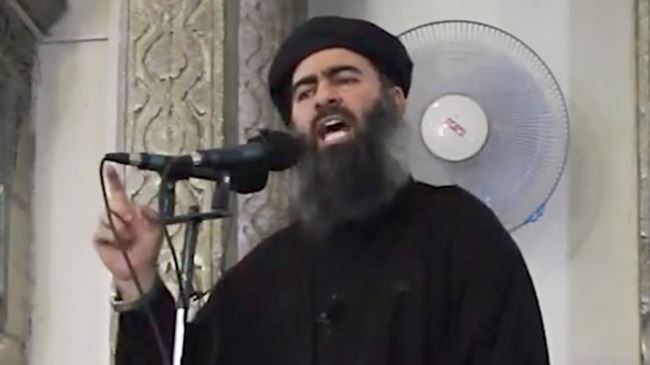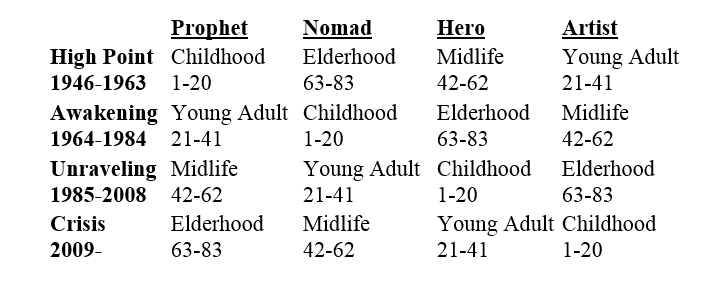GlobalView from Bishop Bill Atwood
Many people are confused about the action of the Islamic State. Just the name is confusing, or perhaps better said, the names. Many people refer to them as ISIS. That is an acronym for the Islamic State in Syria reflecting their beginnings in Syria just a few years ago. President Obama usually refers to them as ISIL. That stands for the Islamic State in the Levant. The Levant is a name for the area that is comprised of Syria, Lebanon, Israel, and Jordon. Some use it to include Turkey and Cyprus as well. People in the area who do not want to refer in any way to the existence of Israel will often use the term the Levant to describe the region without having to mention the Jewish state. It is hard to be sure because it is not explicit, but I have never heard Israelis use the term Levant. I think it is likely a veiled, anti-semitic term.
Origins
ISIS formed as a radical Islamic group in about 2006. It was one of many factions. It developed into a vast and coherent force for evil through the leadership of a man who has adopted the name Abu Bakr al Baghdadi. It is thought that he was originally a Muslim cleric in Iraq. A rough translation of his name would be “The Man from Baghdad Who Does Great Things.” (Think of “Allahu Akbar” – God is great.) Some theorize that he was a radical before the US invasion of Iraq. Others say that when he was incarcerated for some reason, he was radicalized by other inmates. When he was eventually released, he wound up in Syria. Unlike many who forgo strategic thinking for opportunistic attacks, Abu Bakr, sometimes called A.B.A.B., laid out a strategy in Syria to fund and equip his group by robbing banks. Rather than just, “this is a stickup!” these were overwhelming attacks that took every bit of cash, gold, and other valuables from Syrian banks. Some of these raids garnered tens of millions of dollars. That is how they were able to start buying scores of Toyota pickup trucks (and machine guns!) you can see in photos of them traveling in convoy. As they consolidated, Baghdadi employed a different strategy from other radical groups. ISIS is occupying territory and holding on to it. In some of the territory they overtook, there were oil refineries and stockpiles. They have been selling oil and are receiving revenue in excess of a million dollars a day. That buys a lot of bullets and Toyotas. Add to that multi-millions of dollars worth of US tanks and high tech mobile artillery, ISIS has developed one of the best equipped small armies on the planet. They are certainly no push over.
When ISIS spilled over into Iraq, their extreme brutality made it relatively easy to capture territory that was thinly populated. In addition, many in the indigenous population were sympathetic to some of their stated goals, such as establishing a caliphate and imposing Sharia Law. As they moved across Iraq, their forces picked up vast supplies of the latest high tech US military equipment that was simply abandoned when the US forces left. There was another problem. When the open hostilities stilled in Iraq, the US military began to train and equip an indigenous army. The upper level officers and generals were trained by the US and formed a credible force that had great potential. Eventual stability was a reasonable hope.
Sadly, Iraqi President Jalal Talabani was overcome by partisanship (as opposed to bi-partisanship), and removed the US trained generals and put in new, untrained party members into the high salaried general slots as political favors. The real turning point for ISIS came in Mosul. As 3,500 ISIS troops entered Mosul, the generals hopped on helicopters and left, leaving the army with no leadership in place. With no commanders, most of the Iraqi Army soldiers simply fled, making it easy for the city to be overrun.
Militarily, there was a lost opportunity when the ISIS forces left only 500 troops in place and put the other 3,000 on the Mosul-Bagdhad Road. There on the highway, scores of white Toyota pickups lined up with no civilians around them. At that point, air strikes could have attacked with no collateral damage, but those controlling the planes were too slow in responding. While there was sufficient opposition on the Baghdad Road to keep ISIS from entering Baghdad, it was a hollow victory. Now, with occupied territory, ISIS has recruited many more fighters. They now number between 30,000 and 40,000 well armed and increasingly trained troops.With the armament captured in Mosul, they are equipped with the absolute latest in electronics and firepower. Their armored vehicles and tanks are those of a sophisticated army, not a rag-tag terrorist group—though terror group they are.
It is understandable how they have been able to occupy territory. How, though, have they been able to recruit so many young fighters (both men and women!) to their cause?
Dallas Mayor Mike Rawlings recently said, “ISIS is no more Islamic than Nazi senior staff was Christian.” I think he was trying to lay groundwork for receiving Syrian refugees and trying to distinguish between ISIS and Muslims, claiming that they are different groups. His comment, however, is foolishly simplistic and quite simply wrong. Nazi leaders did not claim to be Christian. They were not practicing Christians. They did not derive their strategies from Scripture. They were racist anti-semites. ISIS is fully and absolutely Islamic. It is a brutally violent version of Qu’ranic interpretation, but ISIS is not the only group that desires a Caliphate and wants to see Sharia Law put in place. The Caliphate is essentially an Islamic “pope.” A leader who symbolizes and leads the people across national borders, identifying Islam as the only acceptable practice. What mayor Rawlings needs to understand is that it is connection with Islam that is attracting people into ISIS.
Why is it, though, that ISIS is so attractive to young people. For starters, lets point out the fact that it is not attractive at all to the majority of young Muslims. That is the case even though at some level almost all practicing, observant, Muslims resonate with the concept of establishing a Caliphate and having Sharia Law, “At least,” as one young Muslim said to me, “…the good bits.” Here is what it means for mission strategy.
Two authors, William Strauss and Neil Howe noticed a recurring generational cycle among the generations. They described how a pattern of characteristics in generations is repeated in American life. They described four phases through which culture passes. The High Point, the Awakening, the Unraveling, and the Crisis. In the current cycle, they would put these approximate year to each phase:
High Point 1946-1963
Awakening 1964-1984
Unraveling 1985-2008
Crisis 2009-
My friend, Fred Markert, a senior missiologist with Youth With A Mission puts those descriptions along with Strauss-Howe’s generational descriptions in this chart that shows what each generation is doing during each of the periods described in the cycle:
As culture goes through different cycles, each generation has differing characteristics which they manifest in that setting. There are volumes that could be written about this, but suffice it to say two important things. First, we are certainly in a period of crisis. Second, there is a hero generation about to rise. The good news is that when this lazy, entitled, smarty pants generation finally wakes and sees the crisis and the opportunity, they emerge as world changing heroes. While everyone has a role to play in the Kingdom of God, the best hope for leading the current culture out of the crisis is the new Hero generation. We should be calling them to life in every way possible.
In some ways, in the Muslim culture, the Hero generation is being reached with the vision of the Caliphate and their hope of Sharia Law. They view it as the pursuit of a noble cause. While we would certainly disagree that what ISIS is doing is noble, it would be foolish to miss the possibilities that visionary recruiting offers. No one can offer a vision with greater inspiration than winning the world to Christ. The best way to defeat a terrorist is to reach them with the Gospel of Transformation introducing them into a personal relationship with Jesus Christ. That completely takes away the terrorist threat.
It would be a mistake to be paralyzed by fear from groups like ISIS. It would also be stupid to ignore their threat. Strategically, in terms of mission, we should be looking at ways to reach the rising Hero generation with the Good News of Jesus Christ, cast in a way that ignites in them a passion for mission. When they catch fire, they will bear great fruit. Interestingly, the best generation to communicate the vision might well be the elder/prophetic generation. Without a doubt, though, every generation has a place in God’s Kingdom and a call to action.
Those who ignore the Islamic roots that are inspiring so many young people to join ISIS, are doomed to fail at defeating it. The best news, however, is that there is an even more inspiring vision available in the Bible.
T



